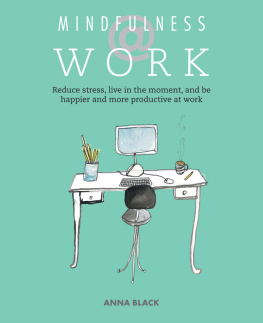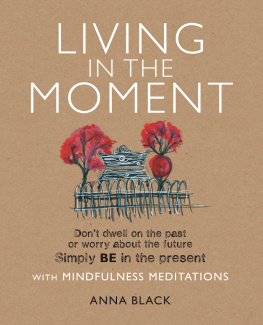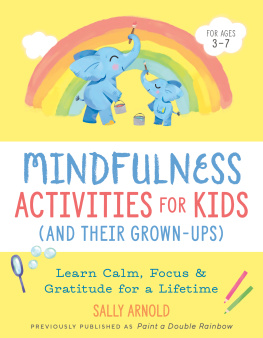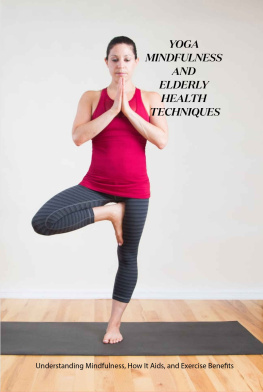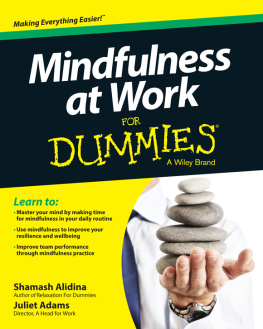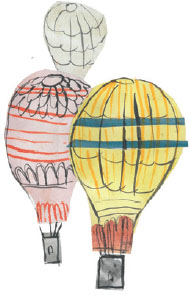
mindfulness
on the go

mindfulness
on the go
DISCOVER HOW TO BE MINDFUL WHEREVER
YOU AREAT HOME OR WORK, ON YOUR DAILY
COMMUTE, OR WHENEVER YOURE ON THE MOVE

ANNA BLACK

For all those who show up and practice. Remember, you dont have to enjoy itjust do it!
This edition published in 2019 by CICO Books
an imprint of Ryland Peters & Small Ltd
2021 Jockeys Fields, London WC1R 4BW
341 E 116th St, New York, NY 10029
www.rylandpeters.com
First published in 2017 as a book and card boxed set
10 9 8 7 6 5 4 3 2 1
Text Anna Black 2017, 2019
Design and illustration CICO Books 2017, 2019
The authors moral rights have been asserted. All rights reserved. No part of this publication may be reproduced, stored in a retrieval system, or transmitted in any form or by any means, electronic, mechanical, photocopying, or otherwise, without the prior permission of the publisher.
A CIP catalog record for this book is available from the Library of Congress and the British Library.
E-ISBN: 978-1-78249-757-8
ISBN: 978-1-78249-722-6
Printed in China
Editor: Helen Ridge
Design concept: Emily Breen
Illustrator: Amy Louise Evans
Commissioning editor: Kristine Pidkameny
Senior editor: Carmel Edmonds
Art director: Sally Powell
Production controller: David Hearn
Publishing manager: Penny Craig
Publisher: Cindy Richards


CONTENTS


The phrase mindfulness on the go might seem a contradiction. However, we can cultivate mindfulness in more ways than just sitting still, and this book will show you how.
People who already practice mindfulness often find it challenging to take the skills learned while meditating on the mat into their everyday lifethe busy-ness of the office or family is distracting and they fall into familiar patterns of automatic behavior.
We can find ourselves compartmentalizing mindfulness into something we do at home for 15 or 20 minutes at a time, rather than face the challenge of doing it throughout the day. This book has been designed to encourage you to practice mindfulness anywhere and at any time. The more you do it, the more it will become second nature, and you will find yourself practicing it instinctively throughout your day.
Whether you have never meditated before or do so regularly, I recommend you read first because it explains what mindfulness is and its origins, and how it can help us in our everyday lives. The focus is primarily on how to practice mindfulness, both formally and informally. It helps to be familiar with the terms used.
o Teasing Apart Our Experience (see ) explains what makes up our experience.
o The Light of Awareness (see ) explains how we can use our attention to explore our experience.
o The Power of the Breath (see ) explain how we can use the breath and body as vehicles for our attention, helping us to access and relate to our experience in a different way.
) explains how mindfulness teaches us to be with all our experiences (even the ones we would rather not be with).
o Much of our suffering is self-created. We weave complex stories about our experiences, which we continually replay and embroider in our minds, thereby influencing our mood and behavior. Noticing the Narrative (see ) explains how we can free ourselves from believing these stories and thereby free ourselves from unnecessary suffering.
There is also information on the key attitudes to cultivate (see pages ).
.

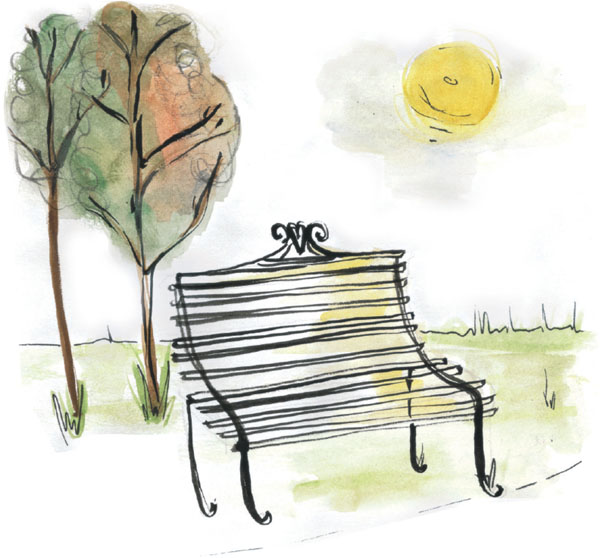
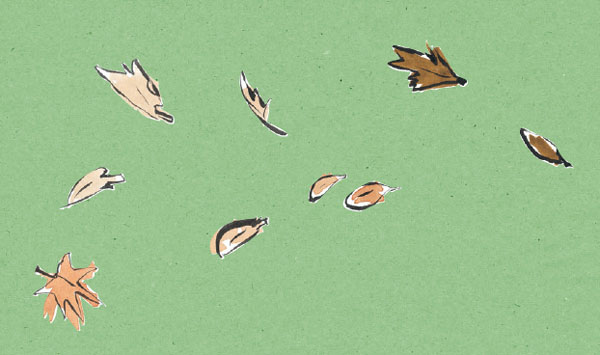
Mindfulness is commonly defined as deliberately paying attention to your experience as it unfolds, without judging it. Bringing kindly awareness is crucial.
When we practice mindfulness, we use our attention like a flashlight, shining it onto our experience (see The Light of Awareness, ).
Our experience refers to changing internal states, such as thoughts, physical sensations, and emotions (see Teasing Apart Our Experience, ) and includes how we relate to them as well as to our external experience, such as sounds, smells, other people, and our immediate environment. These internal and external factors are all interconnected.
We are interested in how we relate to our experience: wanting more of it, resisting it and trying to make it go away, or tuning out from it. Much of our suffering arises as a result of not liking what is arising and trying to make it different.

How we pay attention is important. Intention is crucialwe deliberately choose to pay attention to our experience and, most importantly, we pay attention without judging and with a dollop of kindness, if possible. These are two of the core attitudes we deliberately cultivate through practice and which are also cultivated by practicing regularly (see pages ).
One of the ways mindfulness helps us is by teaching us to be with whatever arises. We dont chase a particular experience. We dont pick and choose and only pay attention to those parts we like (see Turning Toward All Experience, .
Mindfulness is a natural trait that we all have to some degree. Children are inherently mindful but it is a trait that we often lose as we grow older. We can cultivate mindfulness through meditating, either formally or informally.
.
Informal meditation refers to practices integrated into our everyday life. This means doing an activity and knowing what we are doing while we are doing it, rather than thinking about something else or multitasking. For example, eating a meal mindfully can become a meditation. The majority of practices in are informal practices. Some of them are mini meditations and others are more about developing an awareness of habitual patterns of behavior.



